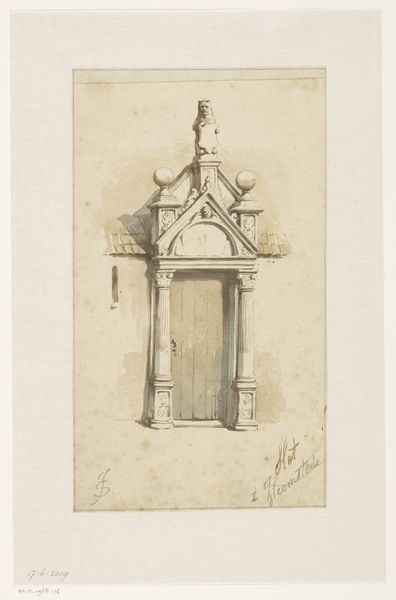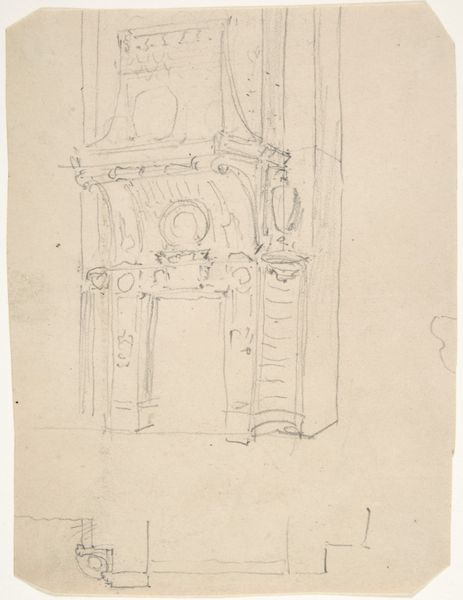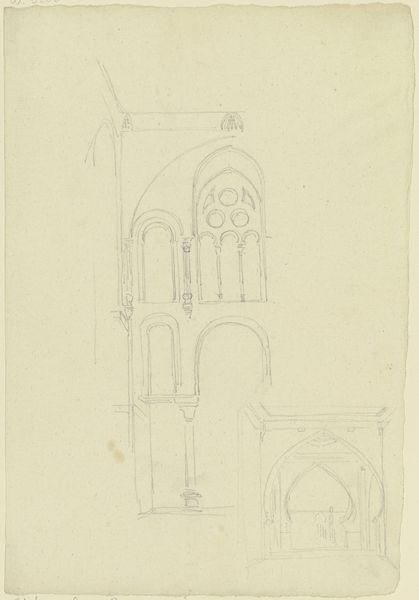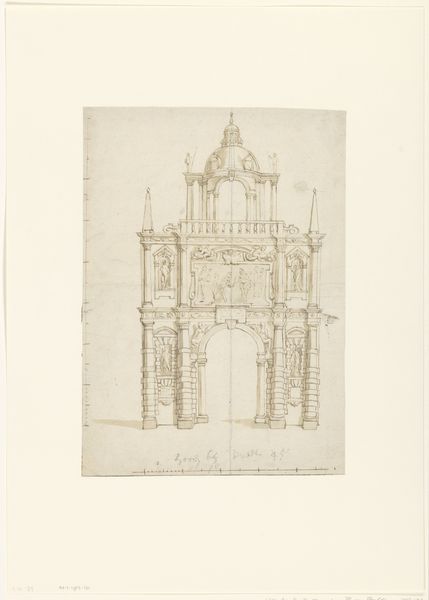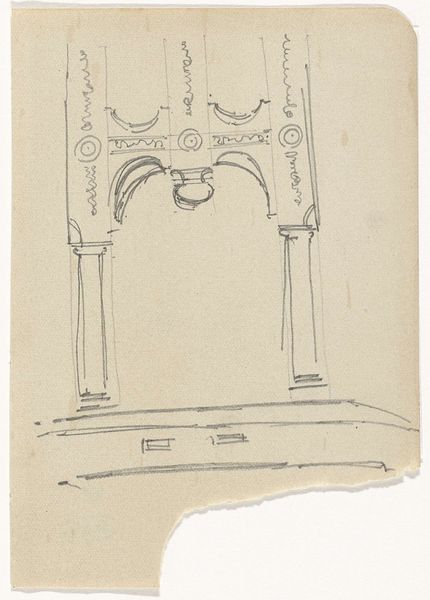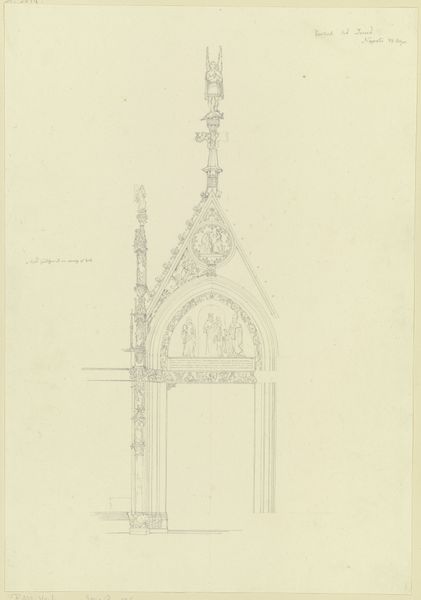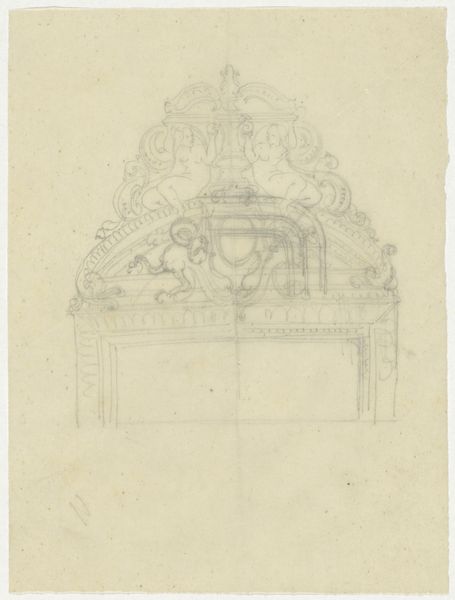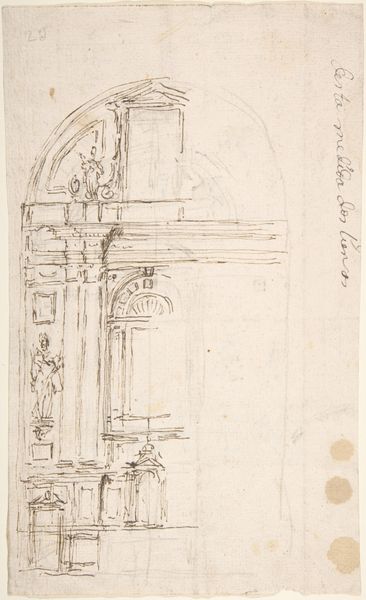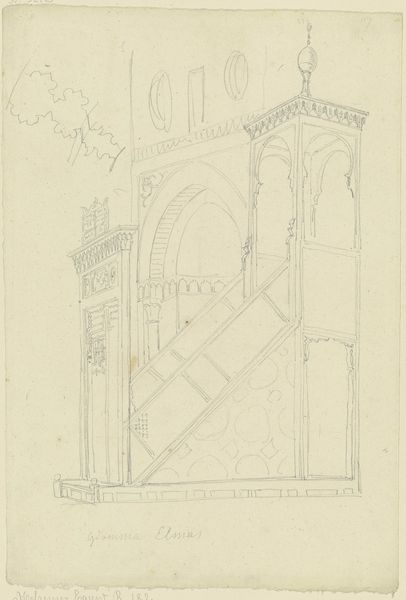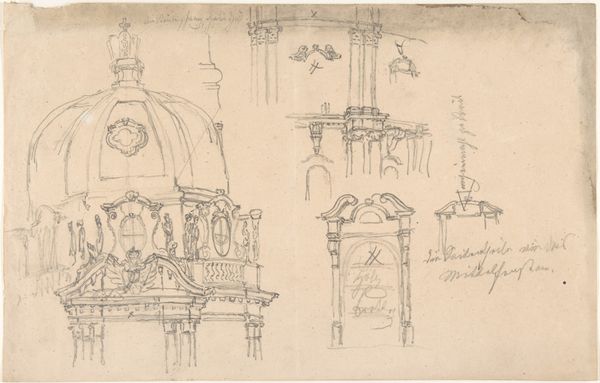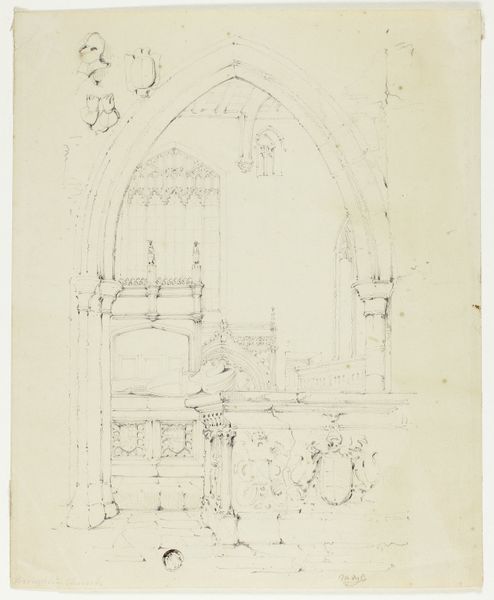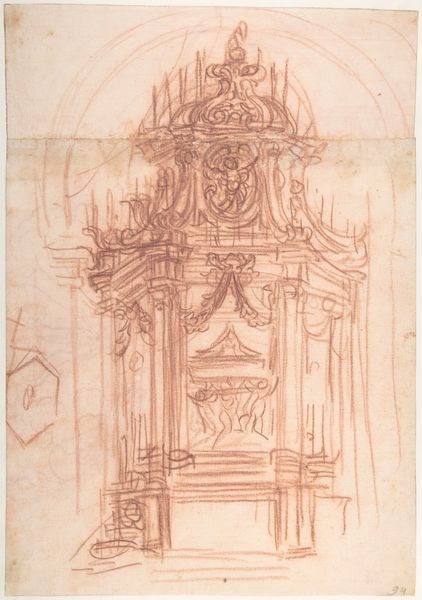
drawing, paper, pencil
#
drawing
#
aged paper
#
toned paper
#
light pencil work
#
pencil sketch
#
landscape
#
paper
#
personal sketchbook
#
ink drawing experimentation
#
romanticism
#
pencil
#
sketchbook drawing
#
cityscape
#
pencil work
#
storyboard and sketchbook work
#
sketchbook art
#
realism
Dimensions: height 295 mm, width 168 mm
Copyright: Rijks Museum: Open Domain
Editor: So, this is "Ingangspoort van het Prinsenhof te Edam," a pencil drawing from 1847 by Jan Striening. The gate seems imposing, almost stoic, but there's a delicacy in the rendering. How do you read this work? Curator: It’s tempting to see just a historical record, but let’s dig deeper. Given the date, 1847, and its rendering of what was then likely a monument of civic pride, I see a quiet statement about power, access, and belonging in Edam. Think about who could pass through that gate, who was represented by those stone figures, and who was excluded. Editor: I hadn’t considered it that way. It does feel rather exclusive now that you mention it. Are there elements that suggest a specific socio-political context? Curator: Absolutely. The architecture itself, with its classical allusions and stoic figures, speaks to an established order. Consider also the act of sketching itself; it's an intellectual pursuit, marking a specific class position. This isn't just about appreciating beauty, but understanding the systems that produce and control that beauty. Whose stories are celebrated in architecture versus whose stories go ignored? Editor: That's a powerful point. I tend to think of these historical cityscapes as romantic or nostalgic. Curator: That’s a common reading. But nostalgia can be a tool to gloss over historical injustices. By questioning whose perspectives are prioritized in these depictions, we can challenge dominant narratives and create space for marginalized voices. Who gets to represent a city's image then, and even now? Editor: This definitely reframes the drawing for me. I’ll think twice before simply seeing beauty in it! Curator: Precisely. Art isn't neutral; it's a reflection of power structures and social dynamics.
Comments
No comments
Be the first to comment and join the conversation on the ultimate creative platform.
